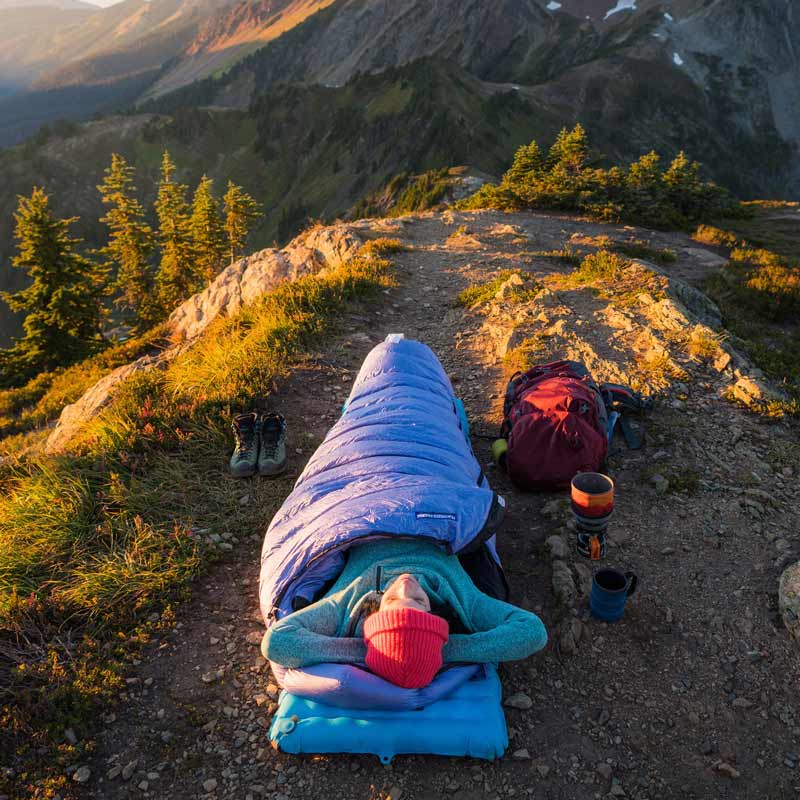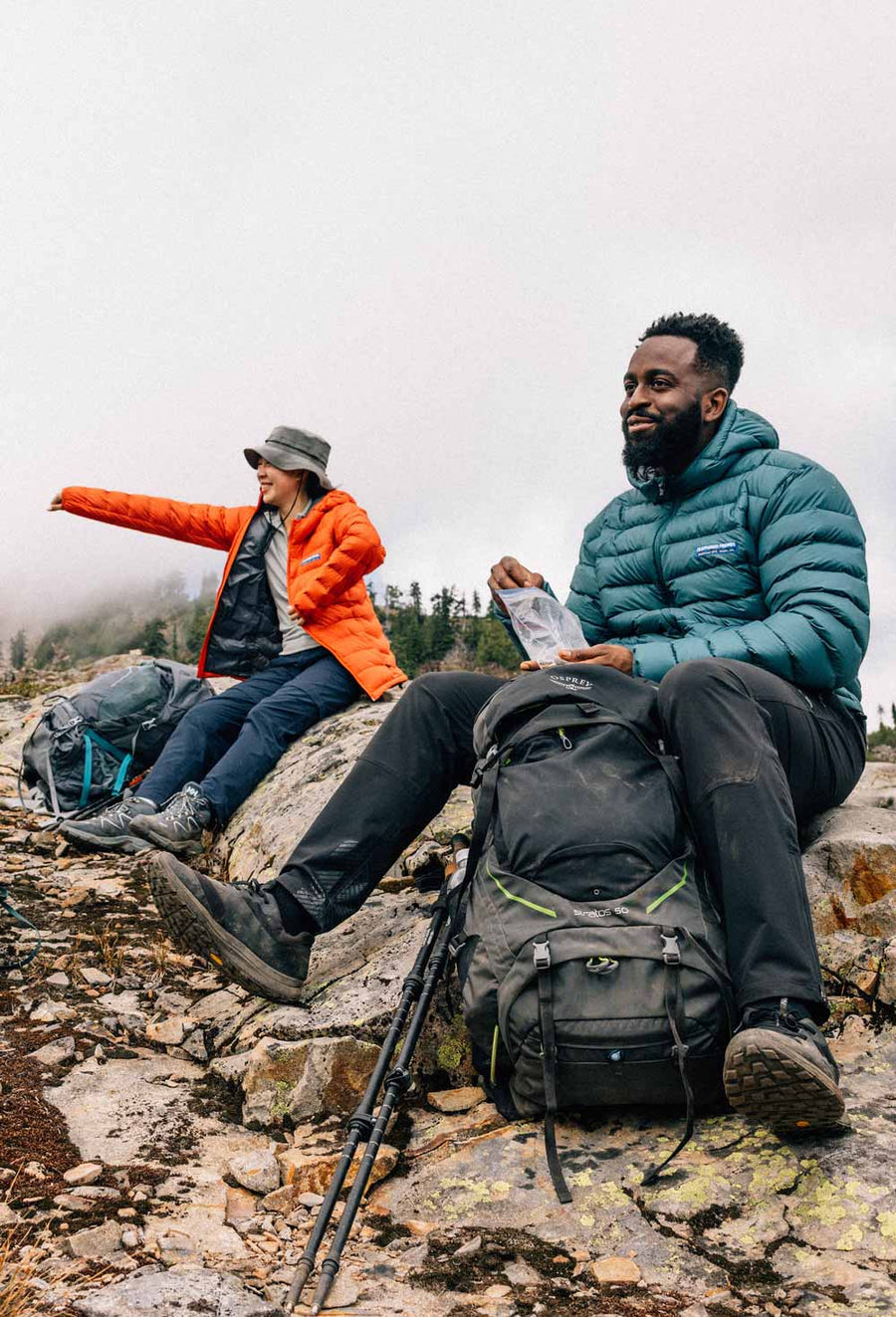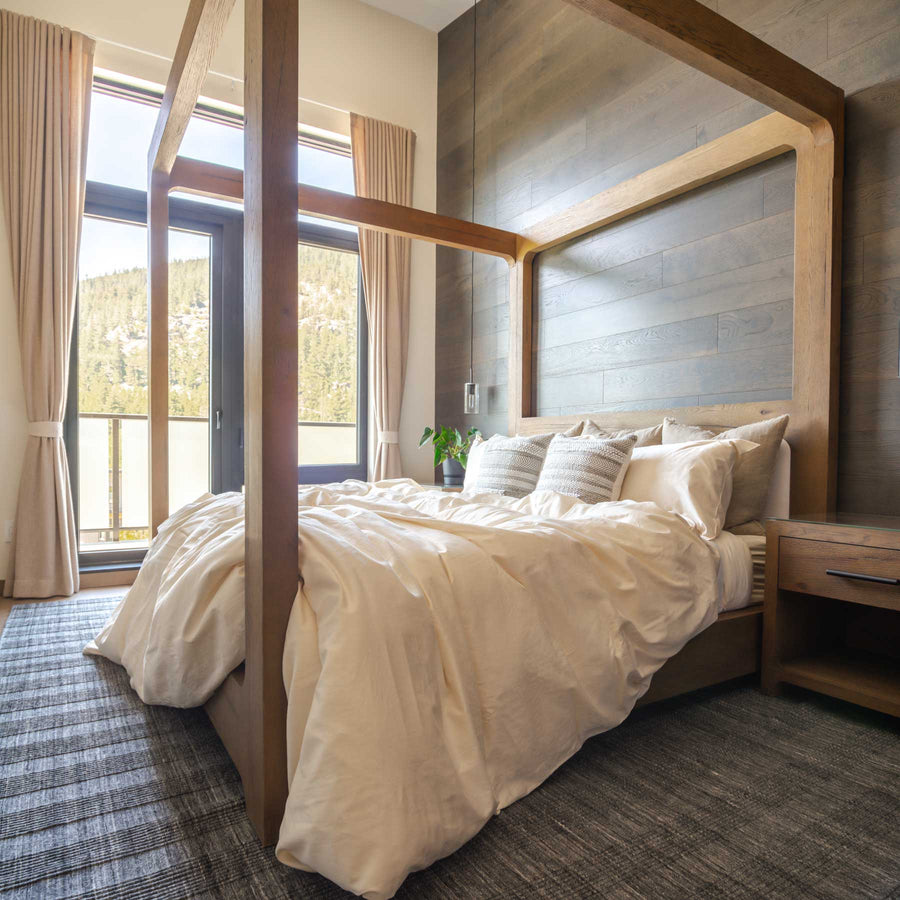Where the Big Stuff Goes Down
A trip report by Mark Pugliese on climbing in the Central Alaska Range.
As the plane banked my heart started racing and I thought “This is where the big stuff goes down.” We were flying into the East Fork of the Toke and the mighty West Face of Huntington dominated the window. I was seeing for the first time how truly massive this terrain was. Unfolding below us was an immense alpine playground of endless peaks, lines of ice, and crumbling glaciers. It would be a place to test ourselves and to find what we were both looking for in our climbing; a great adventure.
In late April of this year Nik Mirhashemi and I flew into the Central Alaska Range with plans of climbing some commonly ascended classics as well as hopefully establishing some new routes of our own. With a pattern of warm and unsettled weather we decided to fly into the Tokositna glacier at the base of Mt. Huntington to attempt the Harvard route as a warm up for the trip.

We landed, set up camp, met some awesome folks that had been there for a week or so and got some conditions reports. We were happy to hear that the conditions in the mountain were in good shape, but had to be aware that the weather was very unsettled. A party climbed the Harvard right when we arrived over the course of 5 blue-collar days, but the sunshine was accompanied by spindrift avalanches from new snow that were a constant, annoying, and dangerous reality.

The next day Nik and I spied a line that directly accessed the French Ridge of Huntington that looked like it would be a fun outing. We headed towards the base of a large granite buttress that then transitioned into a rock and snow ridge for roughly 1500ft. Despite climbing in and out of a whiteout, the route ended up being a lot fun and it was overall not too bad of a weather day. We established “Macho Madness” M6, 75 degrees 1500’ which is a cragging route right out of basecamp in the Toke. We topped out the route when it met the French Ridge, and were able to easily descend by down climbing steep snow for a few hours back to the glacier.

After a rest day, the Harvard route was next on the agenda. Nik and I woke to spotty skies at 4am and decided to go for it. As we skied to the first steep section of glacier the impressive West Face loomed above us and we were both very excited. Face to face with the immense line of rock, snow, and ice, I felt a certain acceptance of risk; I was entering a very dangerous but life giving place. Over the next 24 hours I was going to do and see things that might scare me, but on the other side of the day I would come out potentially a different person. It was this kind of change and challenge that we came for.
The route climbed incredibly well. Super fun ice runnels, classic rock pitches, and steep snow for hundreds of feet. It was not normal fun, however; it was the Alaska-type fun where it dumps snow for the entire 12 hours we were on route and when we are getting absolutely pounded by spindrift avalanches. The weather would always break for an hour or so whenever I would think about retreating, therefore inspiring us to push higher.
We got through most of the cruxes before stopping for about 30 minutes at the base of the last one, The Nose pitch. The pitch goes at A2 so we knew it would take a bit more time than the previous pitches. I aided up the pitch in slings and set up a belay at the top of the steep section and settled in for the most uncomfortable belay of my life. As Nik jugged the pitch I got absolutely destroyed by spindrift. I donned my Feathered Friends Frontpoint Parka and goggles to keep me out of the elements as much as I could. As my legs went numb from the hanging belay, and the snow entered my goggles and jacket, I remember thinking this is what we came for. This is what you hear about when you hear stories from the badass hardmen of the Alaskan alpine. This is adventure. This is changing how I think about climbing and how I think about my life. This is what we came for!
The excitement was marred when I heard Nik yelling and screaming that his crampon just broke while jugging the pitch. With the wind increasing and snow picking up, the mountain guide in both of us told us to reach the top of the technical climbing and take the West Face Couloir descent before we were ripped from the mountain. Which is what we did. But we felt good about our day; we battled through snowy difficult conditions and got a proper Alaskan alpine experience.
Back at camp, Nik repaired his crampon and we set our sights on the last objective of our time in the Toke before bumping somewhere else in the range. Some guys that had been on the Colton Leach told us that a route called “Scorched Granite” (M7, AI6) looked like it was in. The route had been established by Josh Wharton and Will Mayo a few years prior, so we decided to go check it out.

The climbing was spectacular getting to the base of the route, about 1000ft of WI4 in this absolutely massive ice runnel that makes up the lower portion of the Colton-Leach. We were able to do one simul block to the base of the route, fighting the calf burn of a thousand suns. From our vantage point the route looked good, thinner than it appeared from the base, but doable. It was Niks lead. Nik took the rack and started delicately stemming up this shallow iced up corner. He reported that that ice was significantly thinner than it appeared, not thick enough for screws, but the climbing wasn’t bad.
He continued up the corner to about the halfway point of the pitch, he stopped for a bit, then continued. I assumed he had gotten some gear where he stopped but wasn’t sure. All I could see was was a fixed piece of cord in some snow at what looked like a good first belay. Nik climbed to the cord, and clipped a draw into the anchor, he leaned back to start testing the anchor while still on his feet and holding a tool. The anchor immediately blew and Nik lost the tool and was in the air. The pitch was so steep it looked like a sport whipper. I braced for impact, not sure if Nik had gear in, and what the quality of the gear was. I fully expected him to whip past me and factor 2 my 2-screw anchor.
Luckily, Nik had 2 pieces in at the mid pitch mark, so he stopped suddenly as he hit a block half way up the pitch. All told it was every bit of a 50 foot fall. I was upside down wrapped in the rope, and he was upside down and screaming when the fall stopped. I thought he must have some sort of massive injury with the velocity he picked up while in the air.
I fought his screams with mine yelling his name “Nik…Nik…NIK!” he stopped yelling and looked at me “Dude, I’m so sorry” he exclaimed, “I should have backed off the pitch”. I told him that I didn’t care what he should have done, it was done, I wanted to know what hurt on his body. I quickly lowered him to the belay and we made a quick assessment. His ribs hurt and his shin felt like it was bleeding. “You gotta be kidding me, that’s it?” I said. It was incredible, that was it, just a gash on his shin and some badly bruised or minorly broken ribs. We could not believe it. We threaded down the Colton-Leach, got to camp and flew Nik out to the clinic for some stitches that day.
Looking back on the accident I am overwhelmed with how lucky we were. We had as good an outcome as you could ask for with the events that took place. With hindsight, we can see that the route was not in; compared to the the pictures published after the first ascent there should have been significantly fatter section of ice where Nik fell. Lesson learned, go with your gut.
Nik and I grew a lot as partners that day; overcoming that level of stress and exertion will do that. We both have even more respect for putting ourselves in those situations now, and it will forever change how we look at potentially hard and dangerous pitches in the future. But once again, we got what we came for; a serious adventure. This type of climbing is inherently dangerous, since you could do everything right and just be standing in the wrong place at the wrong time and get smoked by a rock. After the accident, these thoughts are very much in the front of both of our heads now, and hopefully will remain there. But in the end, we all accept those risks when we go into that environment.
So although our trip was cut short, we are ok with it. We met some great people, had an absolute blast climbing together, and learned from the mountains. Cheers to many more trips to come Homie.
Follow Nik and I as we head out on our first Himalayan adventure this fall! Thanks Feathered Friends for helping making this dream a reality.
Instagram: @pugliese.mark and @mirhashtag.

The post Where the Big Stuff Goes Down appeared first on Expedition Tales.















Leave a comment